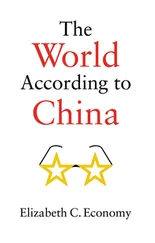1 ...6 7 8 10 11 12 ...25 Cost goes beyond money. No price tag reveals the full cost of something. Everyone’s feelings about cost are very personal. The way you calculate the cost of a decision depends very much on your tastes and your situation.
Whenever you buy something, there is a cost in time and effort beyond the price of the purchase. The time and effort spent on a task may be a high cost for one person and a low cost for another. An hour spent shopping probably seems like a low cost for someone who loves to shop – it may even seem like a benefit. But an hour spent shopping may be a very high cost for someone who does not like to shop. Time and effort are non-monetary costs of shopping.
Even monetary costs can vary depending on a person’s situation. If you are a millionaire, paying $10 for a movie is not a big deal. If your job pays $7 an hour, however, that $10 may seem like a lot of money.
Everyone calculates costs and benefits differently. That makes these calculations subjective. In other words, they depend on a lot of factors that vary from one person to another. Because people’s opinions and tastes differ, it affects how they see the costs and benefits of decisions.
Something’s Missing
Unfortunately, not all rational decisions work out the way you might hope. Sometimes you ignore a cost, or overestimate the benefits. This does not mean you are irrational. You simply could not think of everything.
Often, it is impossible to predict what is going to happen. Unexpected costs arise. Benefits turn out to be less than you thought. That is normal, because no one can predict the future. That does not mean a cost-benefit analysis is useless, though.
Economic Reasoning
Cost-benefit analysis is sometimes called economic reasoning. In many ways, economic reasoning is just like any other kind of reasoning – it is a matter of weighing pros and cons.
Some might call this logic, others common sense. Whether you call it economic reasoning, logic, or common sense, it is all the same thing. It is how people play the game of economics. They make rational decisions hoping for benefits that outweigh costs.
There is no such thing as a free lunch, even when someone else is buying.
The economy is not just a collection of people. It is like a game, except that instead of playing on a board or a field, the players move within the greater economic system. They follow rules and make decisions, and these decisions result in outcomes.
Definition of the Economy
The economy is the total of all the outcomes that result from people participating in the economic system.
Economists measure and discuss the strength and performance of the economy. When they use words such as health, vitality, and even stamina, it sounds much like a doctor talking about a patient. This is not far from the truth.
Economic Indicators
Economists measure the health of the economy by comparing and analyzing economic outcomes that result from various activities. Economists use these instruments to measure economic activity. These instruments, called economic indicators, include
• Gross domestic product.
• Growth rates.
• Unemployment rates.
• Inflation rates.
Doctors use measurements to judge the condition of their patients. Economists measure the health of the economy.
Gross Domestic Product
Some indicators are used quite often to measure the health and vitality of the economy. For example, gross domestic product (GDP) is a very helpful, and widely used, tool.
The GDP measures the overall size of a country’s economy. It is the monetary value of all goods and services produced in a country during a given time, usually one year. The GDP provides a good overall picture of how much economic activity there is within a country.
Understanding GDP
Gross domestic product is the sum total of private consumption, government spending, investment, and the net value of exports. The net value of exports, sometimes called the trade balance, is the value of the goods exported minus the goods imported.
The equation can be put more concisely as follows:
GDP = private consumption + government spending + investment + exports – imports
A common mathematical formula for measuring GDP looks like this:
GDP = C + G + I + Ex – Im
Private consumption includes all the goods and service purchased or consumed by individuals. Government spending includes all the costs incurred by the government, such as salaries of government employees, military spending, funding for education, and so on. Investment is limited to business investments in capital, and it does not include financial investments such as savings accounts or bonds. Exports are those goods that are produced inside one country and sold in another country. Imports are the reverse – goods made outside the country and purchased within the country. Imports are subtracted from the GDP because they are purchased from other countries before they are sold within the United States. These funds contribute to another country’s GDP.
The GDP is a very weighty number for every country in the world.
World GDP
GDP is an important economic indicator. The bigger the GDP, the more activity there is in a country’s economy. For large countries, the GDP numbers are likewise usually very large. Sometimes a country’s GDP is so large that it is hard to comprehend. So what does a GDP number really tell us?
There are a couple of ways to make the GDP more meaningful. One is to make comparisons. For example, in 2011, the GDP for the entire world was just under $70 trillion. The same year, the GDP of the United States was about $15 trillion. That means that roughly one-fifth of all economic activity in the world took place in the United States. That is a lot of economic activity for one country.
The United States has the largest GDP in the world, as evidenced by our many shopping malls.
Annual GDP
You can also compare the GDP from one year to the next, which gives an indication of economic growth on an annual basis, or year by year. For instance, if a country’s GDP grows by 10 percent from one year to the next, the economy is growing rapidly. If its GDP goes down, the economy is weakening. If the GDP stays about the same, the economy is stagnating.
Another way of making the GDP useful is to look at per capita GDP. To do this, you divide a country’s GDP by its population. This tells you the average amount of economic activity contributed by each person in that country.
Growing Up
There are measurements for almost every type of economic activity. These measurements are usually reported as growth rates. Growth rates show how much economic activity there is in specific parts of the economy.
There are additional indicators that show how fast the economy is growing (or shrinking) in particular areas. There are also dozens of other government statistics that measure economic activity, all of which tell us how well businesses and consumers are doing.
Additional growth indicators include
• Corporate profits.
• Farm income.
• Industrial production.
• New housing construction.
• Personal income.
• Retail sales.
Growth is important for an economy.
Help Wanted
GDP and other growth indicators measure the amount of activity taking place in an economy. Another way to measure activity is to look at inactivity.
One important measure of inactivity is the unemployment rate. This indicator tells us the percentage of workers who are out of work. This is a good way to measure the health of an economy. When only 5 percent of people are out of work, the economy is much healthier than when the unemployment rate is 10 percent.
Читать дальше












